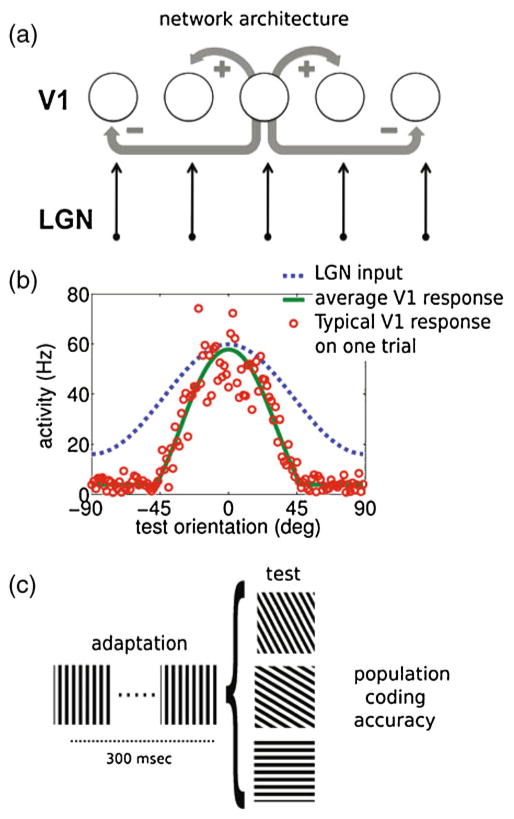Fig. 1.
Network architecture, response and adaptation protocol. (a) The network architecture consists of a recurrent network in which neurons receive feedforward input from the LGN and lateral input with short range excitation and long range inhibition (Mexican hat profile). Periodic boundary conditions (not shown) ensured a ring topology of the network. (b) Model behavior: the cortical neurons (green line) sharpened the input from LGN (blue line; scaled 15 times for clarity). On a single trial the multiplicative noise leads to substantial variability (red dots). (c) Schematic of the adaptation protocol. During 300 ms the network is adapted to a stimulus with orientation ψ = 0, followed by a test phase with stimulus with orientation φ during which no further adaptation takes place

